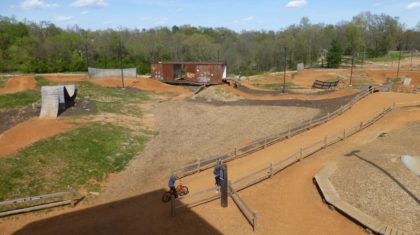#WalkBikeForward: Join us on our journey honoring key moments and people that have shaped our field as we celebrate 20 years of creating active, healthy communities.

Ted Eytan, MD, MS, MPH, family physician in Washington, DC
America’s Most Walkable City?
In terms of breakthroughs, look at Washington, DC. It’s changed from a mostly unwalkable place to one of the most (if not the most?) walkable places in the United States. I live here easily car free, and don’t even own a bike. That’s because Capital Bike Share has been a huge success.
One of the biggest surprises is how little of the car-paradigm is worth holding on to. I moved to Washington, DC, in 2007 without a car, the first time being without one since learning to drive. And I immediately adapted. Every assumption I had about owning a depreciable asset sitting out on the street costing $9,000/year (on average in the US) quickly went out the window. I can envision a world where a lot more people have this experience.
I can’t imagine not living in an active community. I depend on the neurochemical stimulation that walking meetings provide during my workday, as well as my 2-mile trip to and from work on foot or bike.
Traveling Beyond Car Culture
I feel like automobile culture is really an historical anomaly. A generation of young people who grew up with gridlock and saw the health of their communities decline have “spoken up” through their disinterest in owning cars. The US Census reports that the number of young adults driving or carpooling to work in DC declined from 44 percent in 2000 to less than 30 percent. I understand that one reason for VMT (Vehicle Miles Traveled) reductions among young people are changes in driver license laws. Interestingly, much like cigarettes addict people at a very young age, driver’s licenses do the same! As young people are getting licenses later due to new laws, less of them are taking up driving.
What We Need Now
A major breakthrough we need now is more of society’s leaders to become knowledgeable about the importance of active communities, and how to create them. It should not be taken for granted that communities will become better by the will of the people — real leadership is needed, and at a broader level than transportation engineers. Doctors have an important role to play as the stewards of health.
Everyone should have the opportunity to enjoy an active community. I go to some transportation events in DC, and the audience is fairly non-diverse and not focused on the broader needs of the community, because they don’t know what they are. As a result, the input that our transportation agencies receive can lead to the healthy getting healthier, and ignoring the poor. There should be a good connection between the health department and the transportation department. Transportation is about access and health as much as it is about mobility, says traffic engineer Sam Schwartz (who coined the phrase “gridlock”).
A Moment I’ll Never Forget
I suddenly realized the growing impact of active transportation one day in 2013 when I met Jeff Olson of Alta Planning + Design in New York, and we agreed to go on a walking meeting. We ended up taking a break in front of the Flatiron building, and what we witnessed amazed us — Citi Bike after Citi Bike passed. We talked with some of the riders, who told us how much bike share meant to them. What was awesome for me was watching Jeff watch this. I’ll never forget that day.


